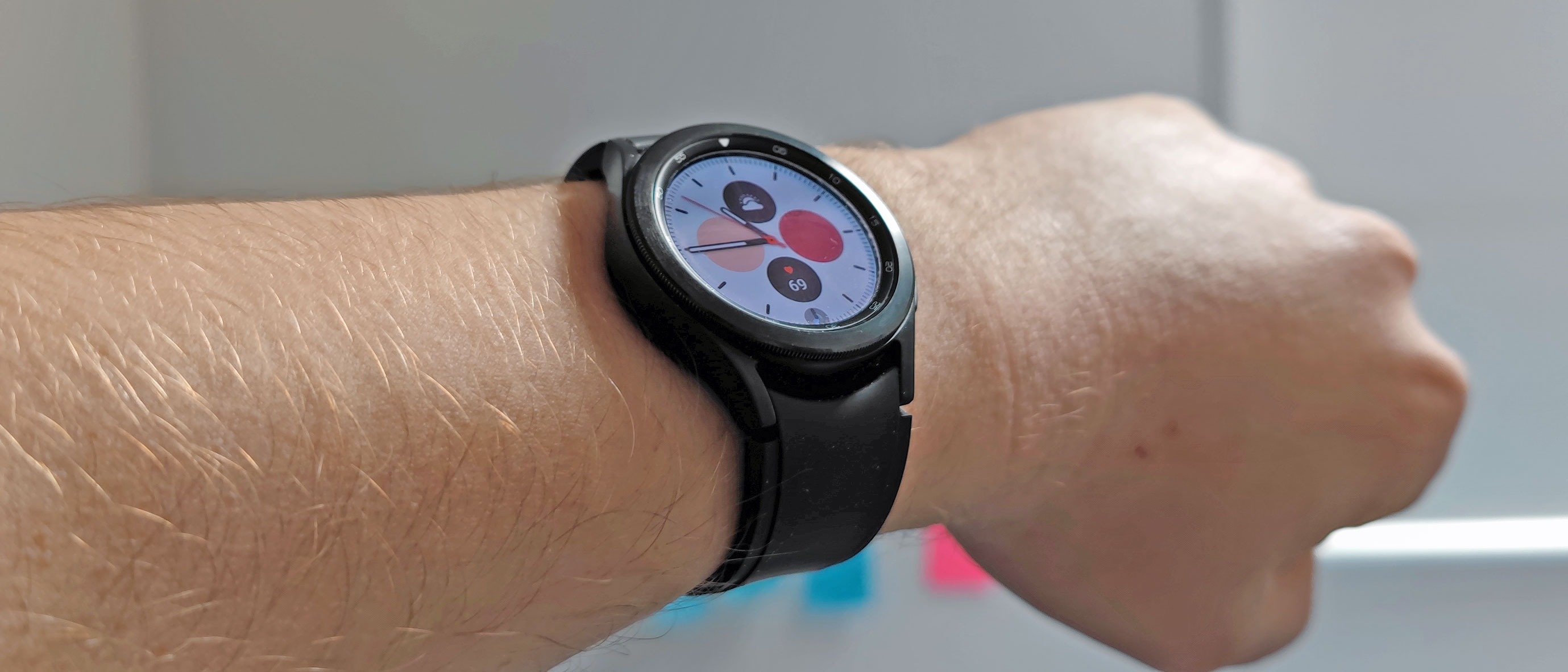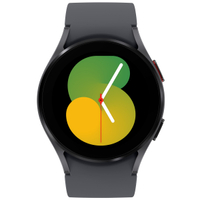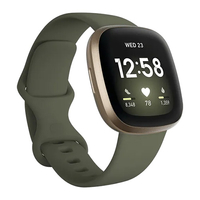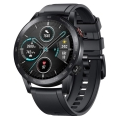TechRadar Verdict
The Samsung Galaxy Watch 4 Classic has all the traits of a premium smartwatch, but it falls short in a few key areas. While its rotating bezel makes navigation a breeze, and it ticks lots of boxes in terms of fitness and software, it’s fiddly to control when you’re working out, its battery life is awful, and while these issues might be justifiable to a degree in a budget wearable, they’re hard to take in a watch that’s billed as a premium device.
Pros
- +
Rotating bezel feels intuitive for navigation
- +
Solid build
- +
Display looks great
Cons
- -
Battery life is awful
- -
Exorbitant price
- -
Workout controls are fiddly
Why you can trust TechRadar
Two-minute review
Alongside the Samsung Galaxy Watch 4, Samsung also introduced the world to the Galaxy Watch 4 Classic, a super-premium smartwatch with the standard model’s software, but with some key hardware changes designed to make it a more tempting proposition for discerning customers with deep enough pockets.
It's worth noting that this isn't Samsung's top watch anymore though, as the company has since unveiled the Samsung Galaxy Watch 5 and Samsung Galaxy Watch 5 Pro. That said, as a result we're likely to see some great offers on the Watch 4 Classic moving forward.
Weight: 47g / 52g
Dimensions: 41.5 x 41.5 x 11.2mm / 45.5 x 45.5 x 11.0mm
Display size: 1.2" (396x396) / 1.4" (450x450)
Operating System: Wear OS Powered by Samsung
Chipset: Exynos W920 Dual Core 1.18GHz
RAM: 1.5GB
Storage: 16GB
Durability: IP68; MIL-STD-810G
Connectivity: LTE, BT 5.0, Wi-Fi
Battery: 247mAh / 361mAh
The Samsung Galaxy Watch 4 Classic is currently the last remaining Samsung Galaxy Watch you can buy with a real, physically rotating bezel. You can easily navigate through menus or pages simply by twisting the bezel, and it’s one of the watch’s best features, especially because the ‘virtual bezel’ on the standard Watch 4, which requires you to stroke the edges of the screen to interact with the device, doesn’t work too well.
This also gives the Galaxy Watch 4 Classic a more premium appearance, with a chunky ring around the display that more closely resembles the design of classic wristwatches. It also gives the wearable added protection against everyday knocks and bumps, which for clumsy people (like this reviewer) is super-useful.
So why have we only given the Galaxy Watch 4 Classic three-and-a-half stars, when its non-classic equivalent got four? Well, the design upgrades aren’t quite enough to excuse some issues in key areas, which made the overall experience of using the watch a muddled affair.
Our main issue, one that would be written in red pen and followed by ‘see me after class’ if this were a school report, would be the watch’s battery life – it regularly struggled to make it through a single day of use. If we were using it for the very tasks that are the whole point of a device like this, such as fitness tracking and viewing notifications, we’d have to charge it twice a day to keep it going.
Workout controls could be quite fiddly too – it can take several seconds to stop the wearable timing an exercise, and lost seconds like that can be irritating for people who want to keep a close eye on their fitness metrics.
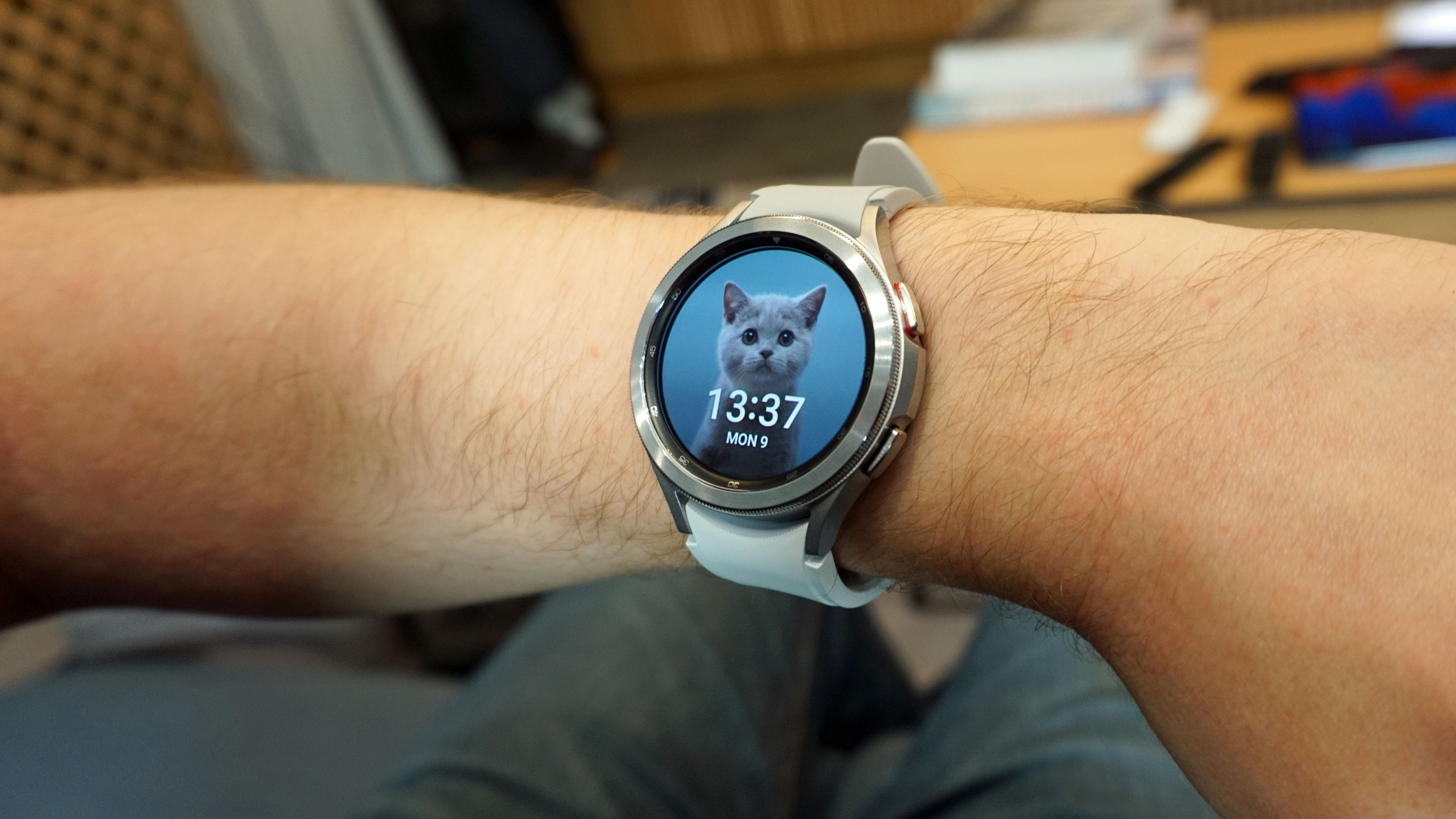
The price is also very high for a smartwatch, especially when you can buy a feature-packed wearable from a company like Fitbit, Honor or Garmin for a much lower price.
That’s not to say the Watch 4 Classic is terrible; its design and display are some of the best we’ve seen. We just can’t say that the few positives outweigh all the negatives.
Samsung Galaxy Watch 4 Classic: Price and availability
- Price depends on which version you buy: 42mm or 46mm
- Starts at $349/£349/AU$549, although can be found at discount
There are a few versions of the Samsung Galaxy Watch 4 Classic, depending on whether you want 4G or Bluetooth connectivity, a 42mm or 46mm screen (which has an effect on the battery life), or a black or silver body (this doesn’t affect price).
| Size | Connectivity | US price | UK price | AU price |
| 42mm | Bluetooth | $349 | £349 | $549 |
| 42mm | LTE | $399 | £389 | $649 |
| 46mm | Bluetooth | $379 | £369 | $599 |
| 46mm | LTE | $429 | £409 | $699 |
The table above shows you the prices for the different configurations available – for context, the Galaxy Watch 4, which is available in 40mm and 44mm sizes, starts at $249.99 / £249 / AU$399 and goes up to $329.99 / £309 (about AU$580).
Samsung Galaxy Watch 4 Classic: Design and display
- Rotating bezel for navigation
- Tricky to change bands
- One of the best displays on a smartwatch
The Samsung Galaxy Watch 4 Classic consists of the main body and interchangeable bands – although we found it a little tricky to change the bands on this device compared to other watches, due to their small levers, so your mileage might vary.
The strap in the box is made from fluoroelastomer, a silicon-like material that can be a little comfier than the rubber some smartwatch bands are made out of, and can also be a little less of an irritant, which is important for people with skin conditions.

The watch comes in silver or black finishes – your choice will determine the color of the straps in the box, as well as the body and bezel of the watch.
Unlike on most other watches, where you can adjust the angle of the strap relative to the body, on the Watch 4 Classic, the straps can only protrude perpendicularly from the sides of the body, which results in a sizable gap between the strap and your wrist on either side of the body; you can see this issue in the image of the standard Watch 4 below – and we'd consider our wrists to be pretty average-sized.
As a result we found the Galaxy Watch a little uncomfortable to wear, although depending on your wrist size you might not have the same experience. It’s also quite a thick watch, which makes it hard to wear with tighter clothing, and uncomfortable in bed.
The watch body is made of stainless steel, and it feels sturdy, partly because of this material and partly because of the raised bezel ring around the screen, which protects the display from knocks and bumps.
There are two buttons on the watch, both on the right edge – the top one takes you back to the home screen, and the bottom one can be held down during workouts to pause tracking (we’ll discuss the fitness features in more detail later).

The bezel is the key differentiator between the Watch 4 Classic and the standard Watch 4, which has a ‘virtual bezel’, although some of Samsung’s previous ‘standard’ wearables have had a physical bezel. This rotates, and can be used as a way to navigate the smartwatch – in fact, it quickly became our chosen way to zoom between menus, rather than swiping, which can be fiddly while you’re walking or if you don’t have the steadiest hands. It’s likely the main reason you’d consider opting for the Classic over the standard model.
The display on the watch is 42mm across if you opt for the 42mm version and 46mm if you opt for the 46mm model - that might sound obvious, but it’s worth clarifying that the size refers to the display, and not the body as a whole.
The display is one of the best we’ve seen on a smartwatch, with bold colors and high max brightness, making it easy to view both in glaring daylight and when we raised our wrist to glance at it while on a run.
Samsung Galaxy Watch 4 Classic: Performance and software
- Requires two separate apps to run effectively
- WearOS 3 brings much-needed upgrades
- Impressed with UX, especially Theatre Mode
Alongside the Samsung Galaxy Watch 4, the Classic marks the debut of Wear OS 3, which has been created as a collaboration between Google and Samsung for this series of watches and will be used on other devices too.
This software brings lots of upgrades over the previous build of Wear OS. There are more tiles that you can easily navigate between using the rotating bezel, so you can easily jump to music controls, workout tracking modes or the heart rate monitor.
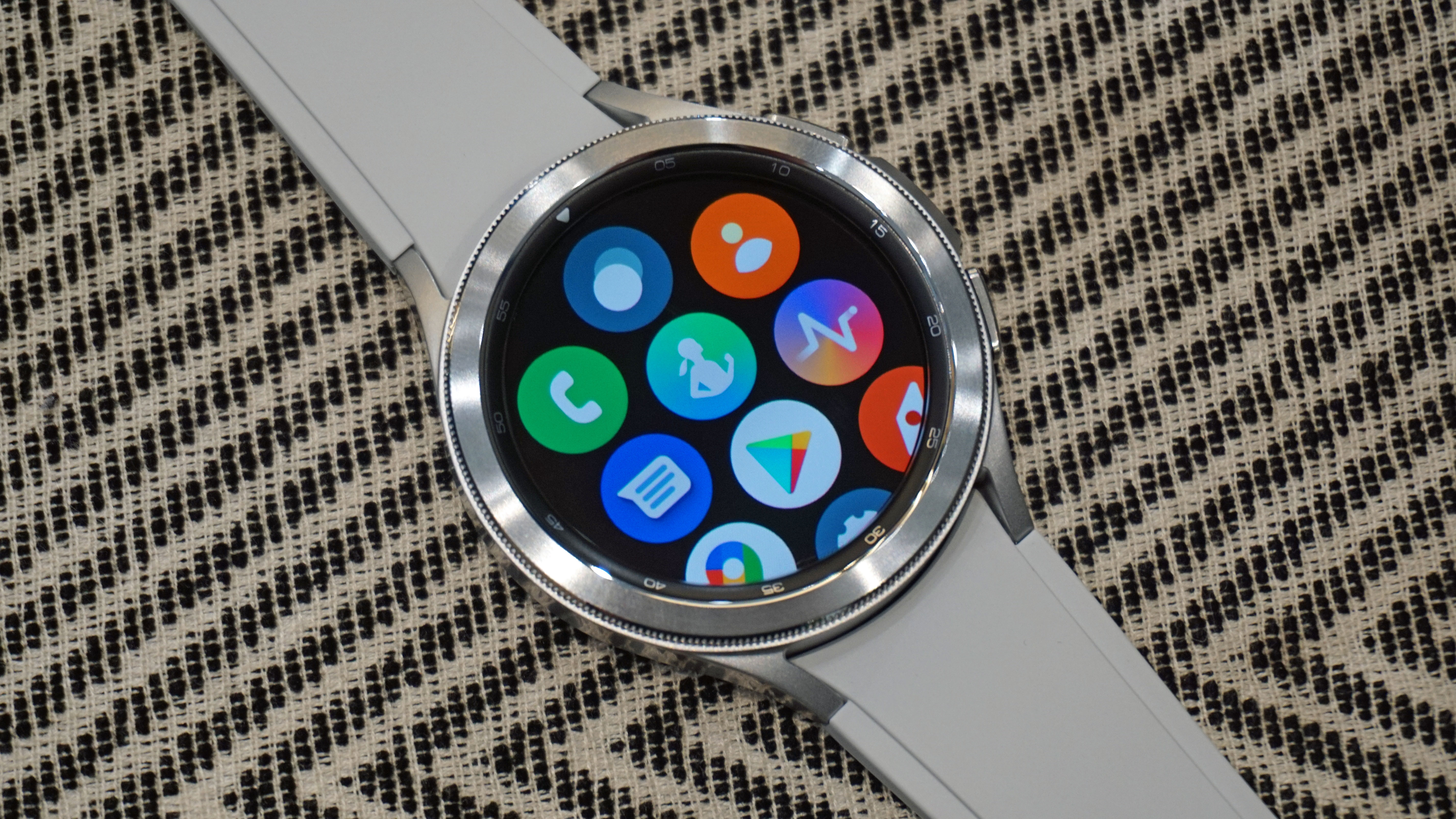
This super-useful tiles list did make the app list almost redundant, as jumping through the hoops to bring this up took much longer than just twisting the bezel the required amount. But there are some functions, like timers or alarms, that we still accessed via the app list from time to time.
The lack of names on apps in the app list makes things a little confusing too: the Timer, Stopwatch and Alarm apps all have icons that are just clocks, so it can be hard knowing which to select if you want one of these tools.
Other than with the bezel, navigation is done by swiping from the home watch face. If you swipe in from the left, you get the notifications menu, pulled from your phone. Swiping down from the top brings up the settings menu, which includes a really useful option that we used a lot called ‘Theatre Mode’ which silenced notifications and turned off raise-to-wake for a set amount of time, making it perfect for watching a movie. We’d like to see more wearables get a mode like this.
Swiping up from the bottom brings up the app menu, and swiping in from left lets you navigate between the tiles – you probably won’t find yourself doing this one much though, as you can do the same thing with the rotating bezel.
There’s a long list of watch faces to choose from, and you can also customize these by changing the complications, using your own photo, moving the clock and so on. You can do this from the watch itself, but given how fiddly that can be on a small screen, we found it easier to use the Galaxy Wearable smartphone app instead.
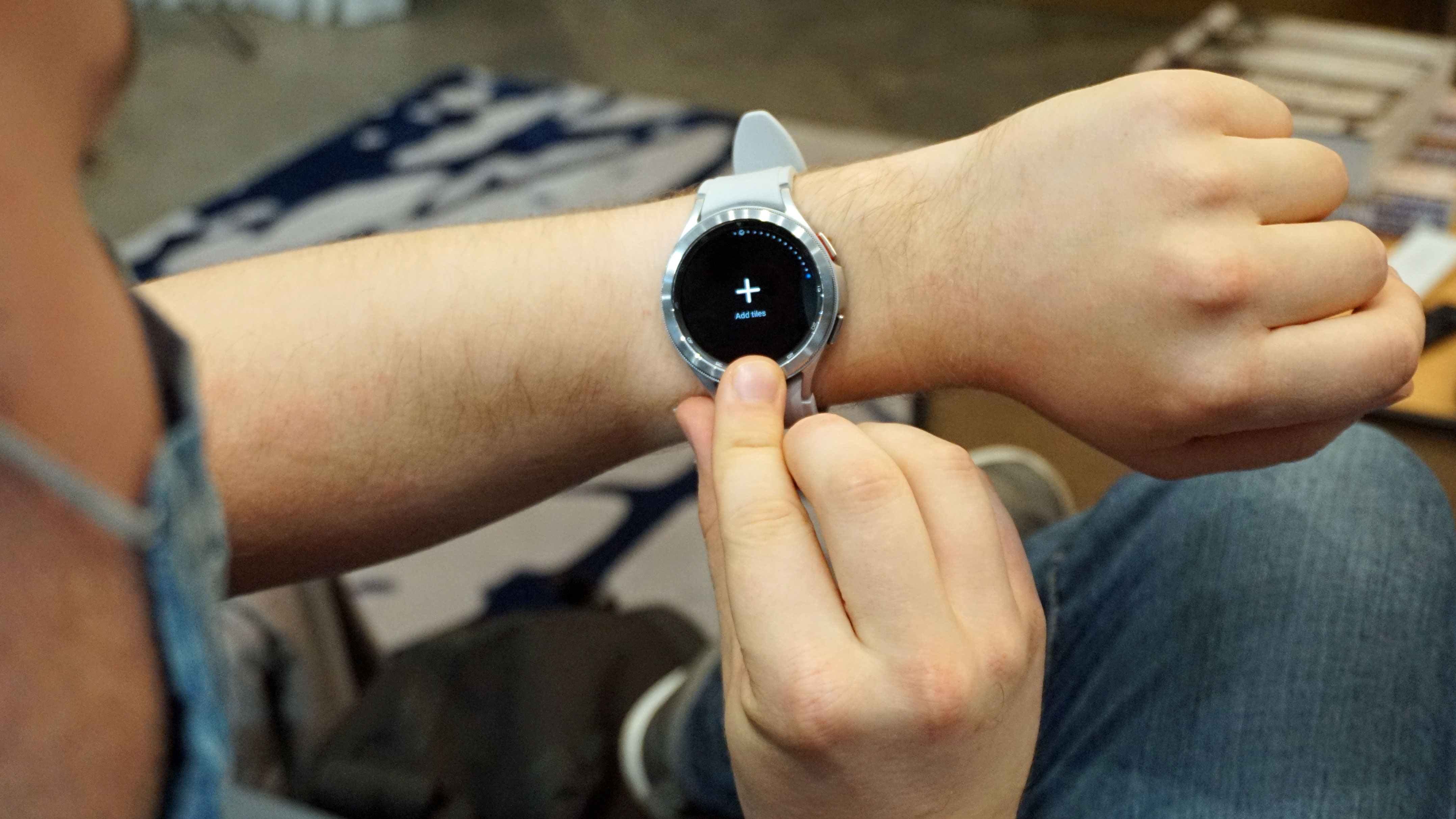
At this point it’s worth noting that you have to install not one but two Samsung apps, because you have to install both the Galaxy Wearable and Samsung Health apps on your smartphone, and you’ll need these in order to make full use of your Watch 4 Classic. In addition to the aforementioned customization options, they enable you to log your fitness metrics and get more details about your workouts. It’s just a shame that you need to switch between the apps for different tasks, rather than having all the information and tools that you need in one.
Samsung Galaxy Watch 4 Classic: Fitness
- Three core activity profiles, and 10 more secondary profiles
- Strong endurance/distance metrics
- Mix of metric and imperial measurements cannot be changed
The Samsung Galaxy Watch 4 Classic has three core fitness modes that are easy to access from the main device menu. There’s walking, running and cycling, as well as 10 more in a secondary menu which includes swimming, circuit training and gym workouts, and you can add lots more from the Samsung Health app.
The watch tracks your location while you’re working out via GPS, and also records time, speed, elevation, heart rate, heart rate, calories burned and more. It breaks down these metrics into splits per kilometer.
Well, the app breaks down the splits by kilometer, and measures your distances in metric. However the watch itself showed us the distance in miles, an imperial unit. This was very confusing – especially before we became aware of the discrepancy – and we couldn’t find a way to change it.
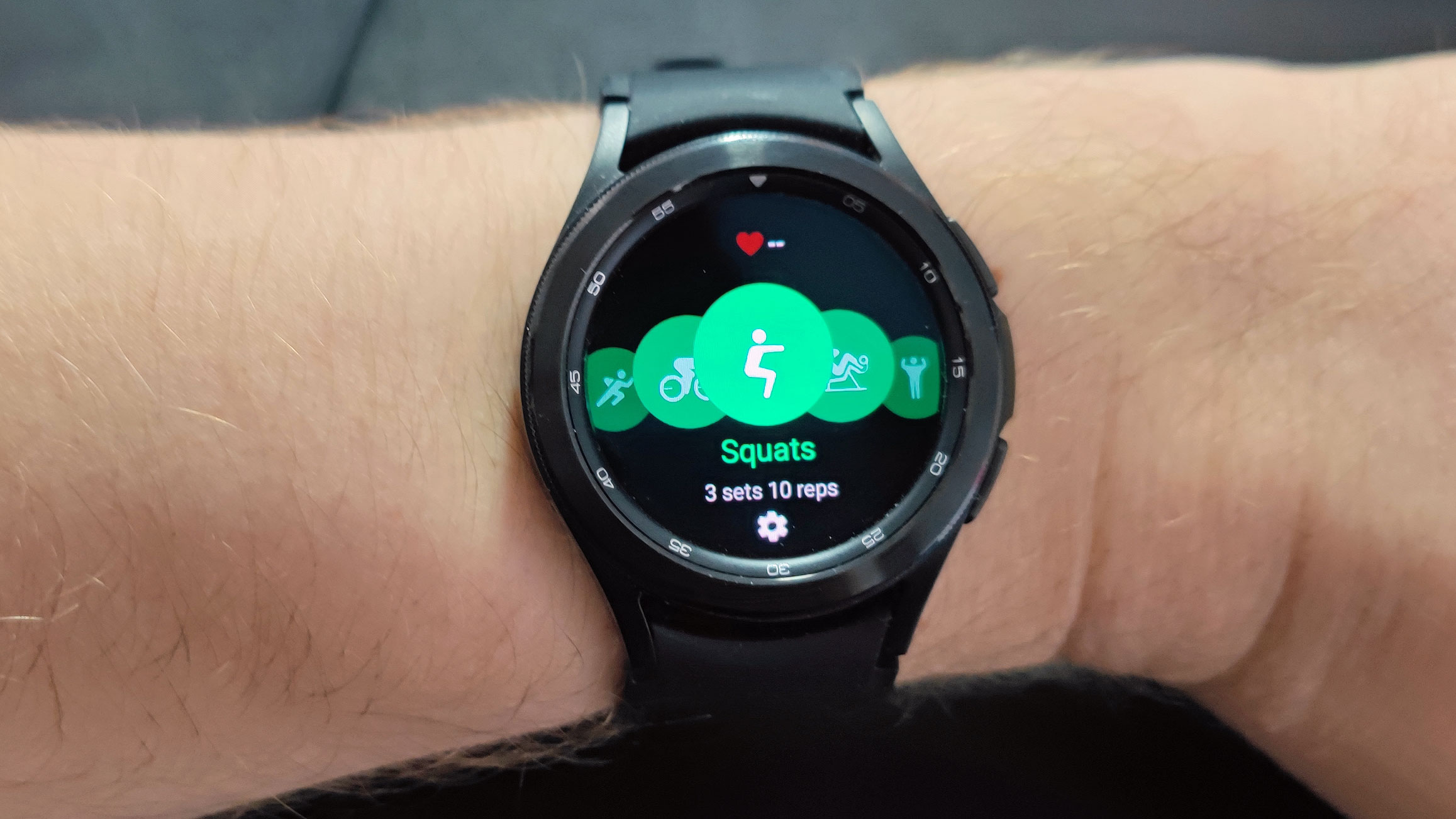
Talking of things we couldn’t find a way to change, at the end of every ‘lap’ or mile, the watch will interrupt any music you’re listening to as a voice reels off a list of your metrics, including time, distance and heart rate. This could take quite a while, and if you were listening to music via the same phone it’d play over that (or interrupt a spoken-word podcast). We couldn’t find a way to stop this happening, either in the settings of the watch or in the apps.
Overall, we found running data to be pretty accurate, especially in terms of distance and heart rate when compared to a few other fitness trackers. Time could be a little iffy though, and that’s because the workout controls are quite fiddly, which resulted in us wasting seconds every time we tried to pause the tracking as we were waiting to cross a road.
You can pause a run by holding the lower button, or by swiping in from the left side and pressing ‘Pause’ – both of these options take at least a second, which can really add up if you’re running in a busy area, and can cause the time to be inflated compared to on a smartwatch with a simple single-tap pause option.
Moreover, these methods only work if you’re already looking at the workout metrics screen. This in turn is dependent on raise-to-wake accurately working when you’re on a run – it doesn’t always – and if you’re on another watch face – for example if you’ve been skipping music or checking navigation – you have to reopen the workout face to access the pause option. All these seconds add up.
If manually tracking workouts can be a little bit frustrating, the Watch 4’s automatic walk monitoring is surprisingly useful. When you’ve been walking for 10 minutes without turning on the walk tracking mode, the watch jumps into it automatically, providing you useful extra information you wouldn’t have otherwise collected about your health.

We didn’t test every Galaxy Watch 4 Classic fitness mode, but we tried some like Squats and Sit-Ups, and found them a little bit hit-and-miss. When doing squats, the watch would sometimes fail to register a repetition – we’d estimate this happened once or twice per set of 10, and it was the same with sit-ups. It’s a little annoying, but if you’re okay with having to do an extra crunch or squat you can look past it.
There were times for each of those workouts, though, where the watch just refused to pick up any reps, and we couldn’t work out why.
An intriguing new mode here is body composition scanning, which tells you things like your body fat percentage, your body water percentage and your BMI. This obviously isn’t as accurate as proper machinery for scanning these things, but it’s impressive that a smartwatch can scan for these things.
There’s no perfect smartwatch when it comes to fitness tracking, and the Samsung Galaxy Watch 4 Classic is by no means the worst we’ve tested – in fact, it’s one of the better ones we’ve used for many types of workouts, despite the aforementioned inaccuracies. But the fiddly workout controls and audio announcements can make it irritating to use.
Samsung Galaxy Watch 4 Classic: Battery life
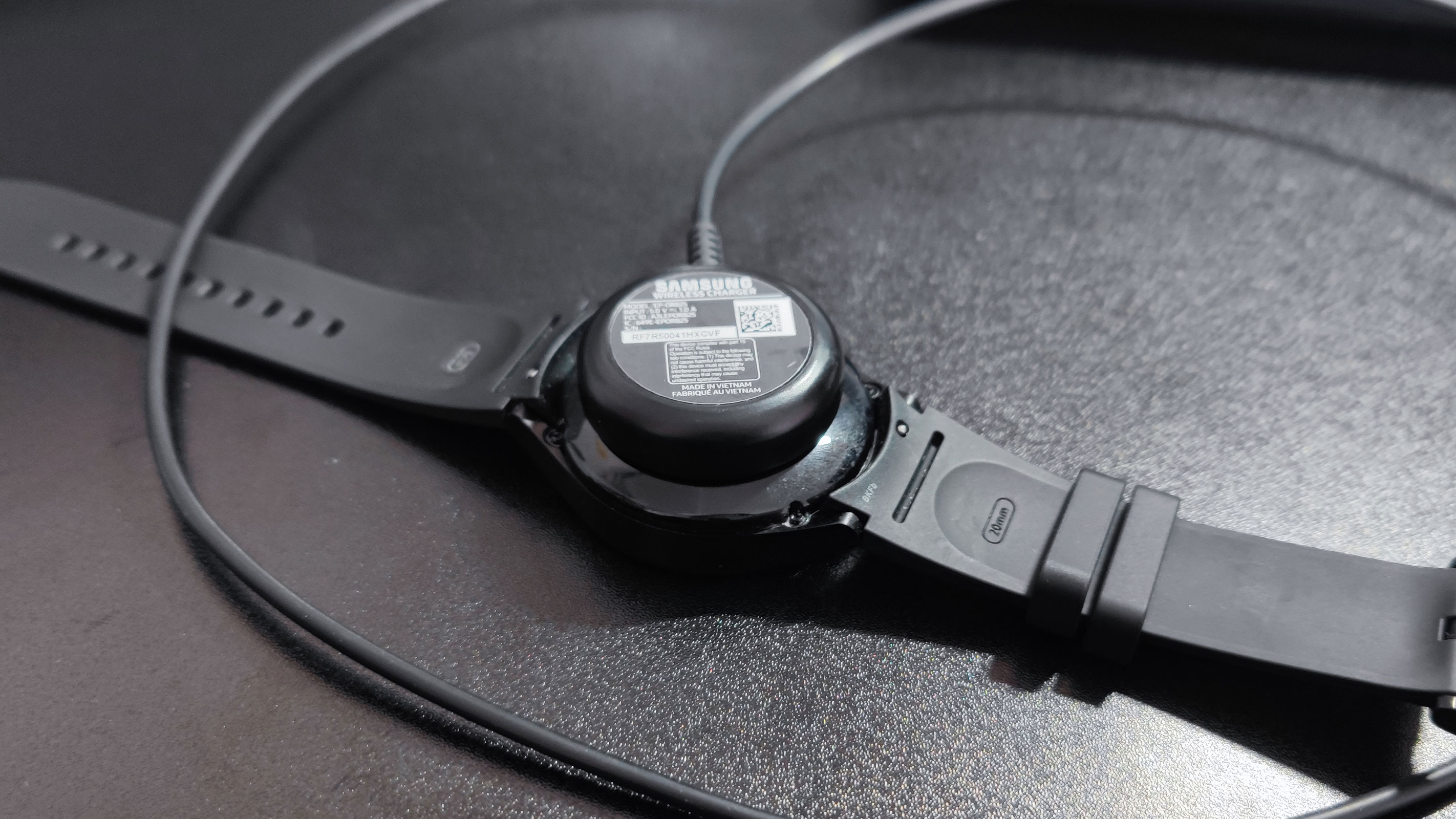
The Samsung Galaxy Watch 4 Classic’s battery life is, without a shadow of a doubt, its worst feature. While the standard model lasts about two days between charges, based on our review time, in our testing we’d estimate that the Classic lasts less than a single day before running out of charge.
That’s an absolutely abysmal performance, which somehow manages to make the one-day-life Apple Watch look good in comparison. For context, an average smartwatch lasts about two weeks between charges, and some can go a month or even longer before needing to be powered.
Our average day would include about an hour of fitness tracking, some music streaming, picking up the occasional message, and frequent heart rate monitoring. With all this, we’d estimate that the watch would last between about 20 and 22 hours before needing to be charged – we got into the habit of charging the device twice per day, once at work in the morning and again in the evening before bed, to ensure that it wouldn’t run out of juice.
That’s a dramatically sub-par performance, and we’d deem it a major red flag for potential buyers.
Charging is a pad that connects to a USB-C outlet. It’s not fast charging – it takes about two hours to power the watch up to full, which is baffling given the short battery life.
Should I buy the Samsung Galaxy Watch 4 Classic
Should I buy the Samsung Galaxy Watch 4 Classic?

Buy it if...
Your watches tend to suffer from knocks and scrapes
With a stainless steel body and big, protective bezel, we found the Samsung Galaxy Watch 4 Classic could easily withstand the occasional bump and knock.
You have trouble navigating smartwatches
The rotating bezel is a fantastic feature for navigation, especially if you find smartwatch screens too small or fiddly to easily navigate on.
You want to monitor your body composition
We found the body composition features fascinating to use, (even though the feedback was often a little dismaying for our post-lockdown fitness level!). If you want to find out things like your body water or skeletal muscle, it’s a useful mode.
Don't buy it if...
You want a watch that can last a full day without charging
The Samsung Galaxy Watch 4 Classic only lasted a whole day of use between chargers if we modified our behaviour to enable it to do so, for example by taking it off for periods, or putting it into battery-saver mode.
You’re on a budget
This isn’t a smartwatch for people with a limited budget – not unless you find it at a particularly great discount in the sales. Check out the non-Classic version instead.
You care about workout timings
We often racked up lots of extra seconds on runs from trying to wrestle with the workout controls. If you need your timings to be as accurate as possible, buy a dedicated running watch instead.
Also consider...
If our Samsung Galaxy Watch 4 Classic review has you considering other wearables, here are three more smartwatches to peruse.
Samsung Galaxy Watch 5
It doesn't improve on the battery life of the Galaxy Watch 4 Classic, but it does have some nice new health features, including a skin temperature sensor that wasn't active at launch but should be available any day now.
Check out our Samsung Galaxy Watch 5 review
Fitbit Versa 3
The Fitbit Versa 3 has already been upstaged by the Versa 4, but like the Galaxy Watch 4 Classic, that means great deals are bound to be found. The Versa 3 adds GPS to the Fitbit Versa family, and we found it highly capable.
Check out our Fitbit Versa 3 review
Honor Magic Watch 2
If you were let down by our battery life results with the Samsung Galaxy Watch 4 Classic, you should check out the Honor Magic Watch 2, which lasted much longer in our testing period. It's harder to find, but worth it for fitness buffs.
Check out our Honor Magic Watch 2 review
First reviewed October 2021

Tom Bedford joined TechRadar in early 2019 as a staff writer, and left the team as deputy phones editor in late 2022 to work for entertainment site (and TR sister-site) What To Watch. He continues to contribute on a freelance basis for several sections including phones, audio and fitness.
